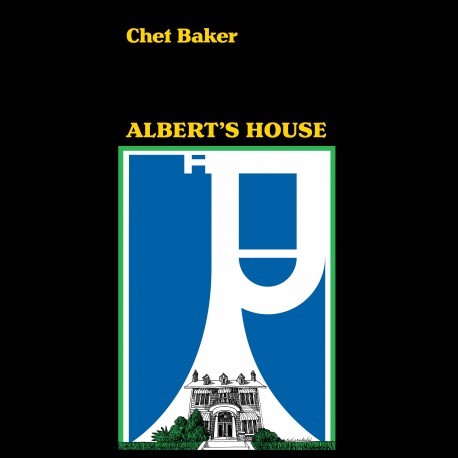 View larger
View larger
Chet Baker: Albert's House
New product
More info
Performers:
-
Paul Smith/piano and organ
-
Barney Kessel/guitar
-
Jim Hughart/bass
-
Frank Capp/drums
Chet Baker, the Boyish, appealing Young Man With the Horn who burst into national prominence playing with Charlie Parker and Gerry Mulligan in the early 1950’s, though relatively inactive in recent years, here plies his unusual trade, which is blowing a strangely soft, emotional, understated sort of jazz trumpet sound.
In this welcome collection of warm new melodies Baker functions in a more relaxed manner than ever, playing straight melody first-choruses on most of the tracks, then sliding into gentle, but typically unique jazz-variations. It is almost as if his respect for the songs — a number of them richly intricate — were such that he wanted first to teach the listener the true themes and only then take creative liberties.
There is a quality in Baker’s tone that is unmistakable. Limiting himself almost totally to the low register, rarely covering a range of more than a tenth, he still manages to weave fascinating patterns within the limits he sets for himself. Not since Bunny Berrigan, certainly, has any jazz trumpet artist wrung so much understated emotion out of a horn’s lower range. Berrigan could reach the ceiling when he wished to; so can Baker, but Chet seems content currently to state his ideas witli a curiously controlled sentiment, even dispensing his vibrato with reserve.
Chet Baker is somehow the essential representation of the romantic, itinerant horn· man, a strange mixture of the lost Young Man the novel was written about, with elements of Bunny, of Bix, of the old romanticism, and the new harmonic richness and technique. Listening to Baker you somehow become involved with the man in a way you don’t with other even great trumpet players.
Chet himself views this collection as essentially a matter of delivering the composer’s message and only secondly of making a jazz statement, clearly a wise placement of emphasis since the listener must first be introduced to a new melody before he can appreciate alterations from the original line.
“Albert’s House,” is an unusual melody with a fresh, inventive bridge.
“Farewell San Francisco” evokes Stanyan Street echoes.
“Time” is a full, broad, warmly harmonic melody for which Chet obviously has considerable respect.
“I Should Have Told You So” is a funky ballad with its roots in blues and jazz.
The title “How Dare You Sir” makes one want to hear the lyric. It’s a tender emotional ballad, very right for the Chet Baker style.
“End of the Line,” is a sophisticated love song constructed on a Latin rythmic base.
“Pretty People” is a gently swinging jazz waltz, built on constantly-shifting harmonics.
“Sunday In Town” sounds very Manhattan though it was writeen as a musical portrait of Chicago in the score of the documentary film “I Remember Illinois.”
“A Man Who Used To Be” is a haunting waltz - previously recorded by Steve Lawrence - which may one day become a standard.
“Never Had This Feeling Before” is a romantic, melodic statement in the ballad style of the 1940’s.
Chet next floats us easily into a rich, inventive Bosa Nova called “Life.”
The album closes out with a warm, gentle ballad, “Nice Little Girls.”
All in all what we have here is one of those rare situations when a jazz instrumentalist has chosen wisely in selecting melodies and harmonies that match his own personal approach to American music.
Track list:
- ALBERT’S HOUSE
- FAREWELL, SAN FRANCISCO
- TIME
- I SHOULD HAVE TOLD YOU SO
- HOW DARE YOU, SIR
- END OF THE LINE
- PRETTY PEOPLE
- SUNDAY IN TOWN
- A MAN WHO USED TO BE
- NEVER HAD THIS FEELING BEFORE
- LIFE
- NICE LITTLE GIRLS


